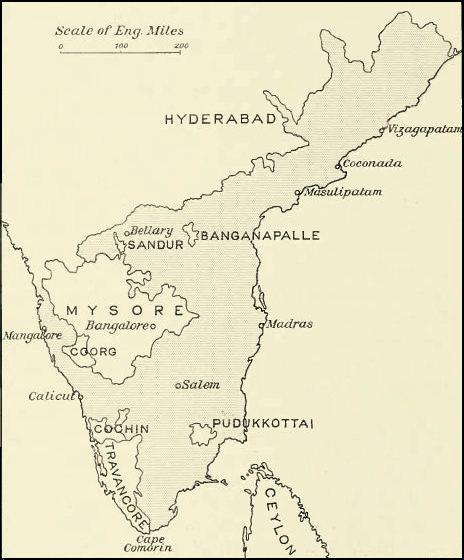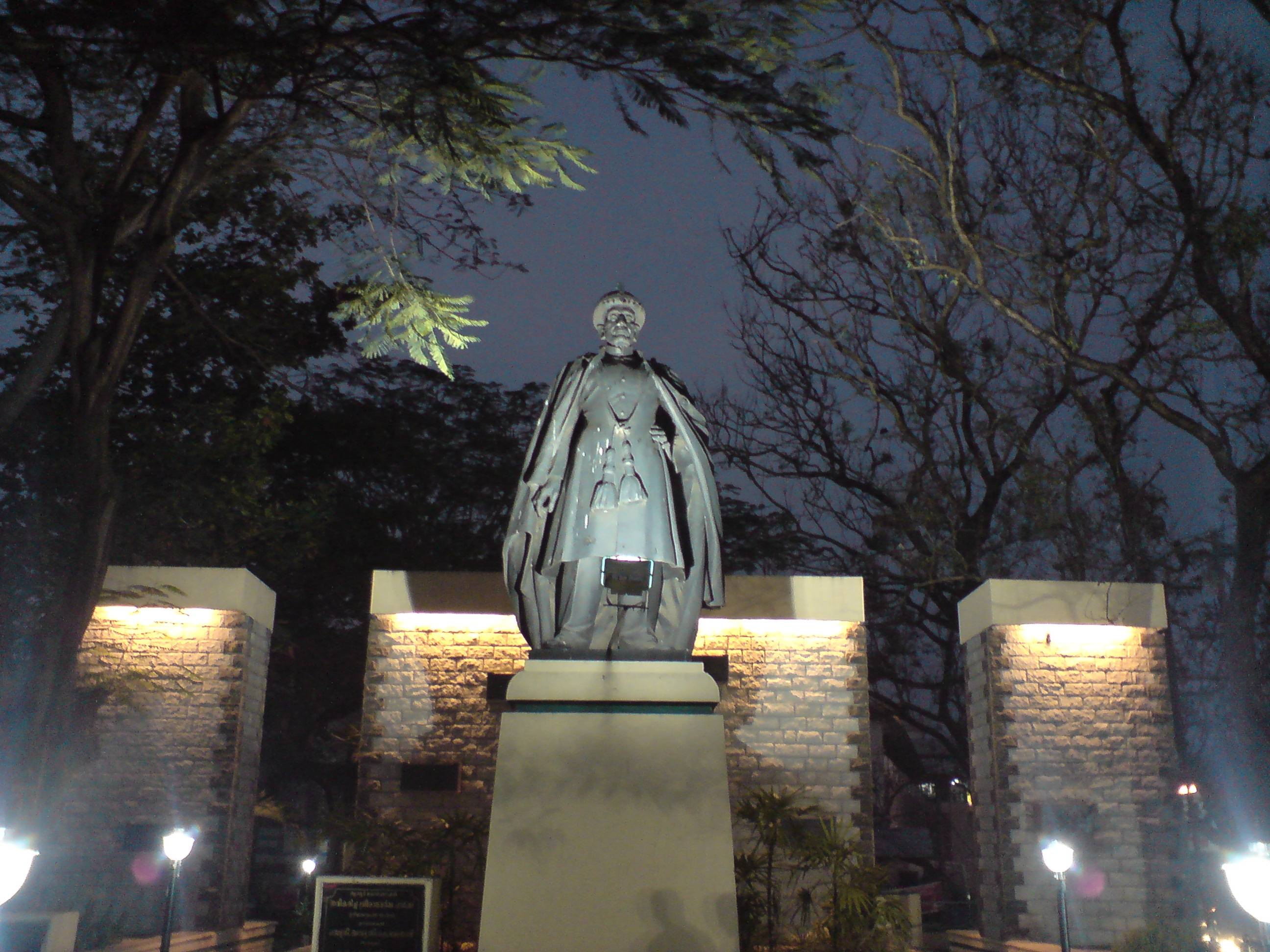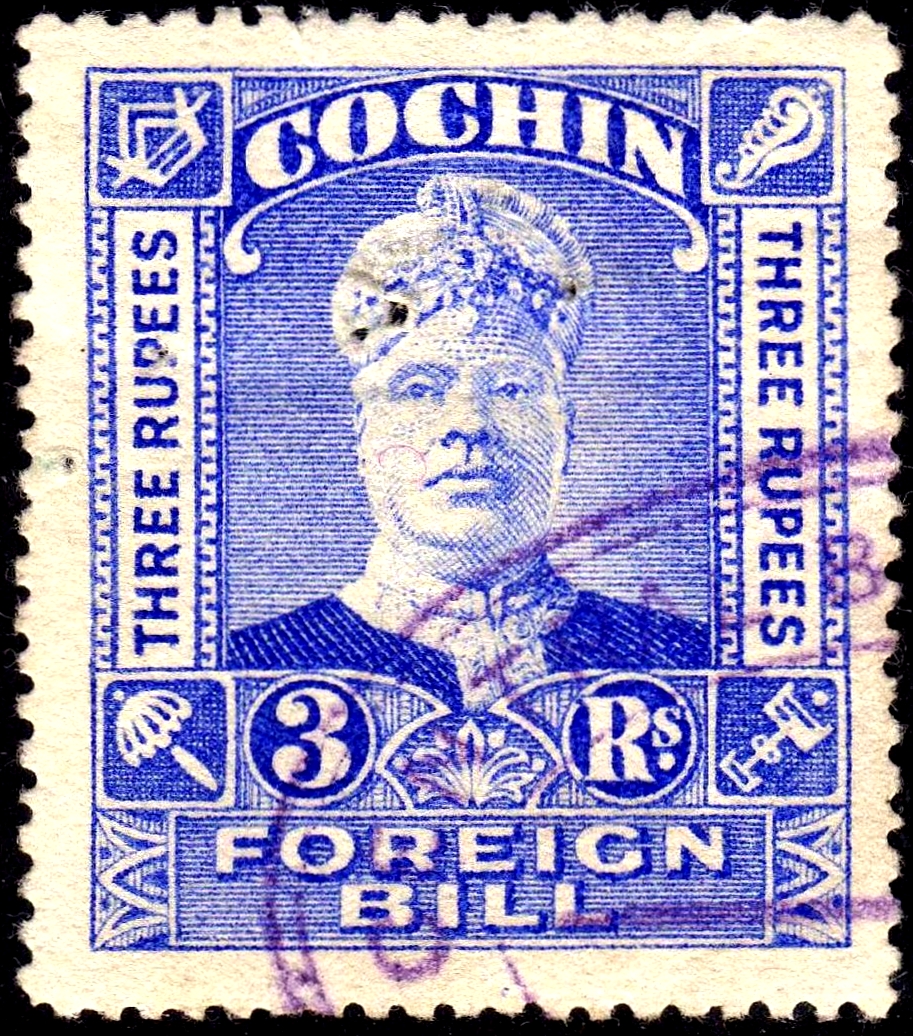|
Kerala Varma VI
Kerala Varma VI GCIE (c. 1863 – 13 October 1943) was the ruler of the Kingdom of Cochin from 23 May 1941 to 23 October 1943. Reign Kerala Varma ascended the throne on the death of Rama Varma XVII. He was a younger brother of Rama Varma XVI. He was famously known as Midukkan Thampuran and it was during his reign that food rationing system was introduced for first time in an Indian princely state. He was an Ayurvedic physician with great knowledge. Personal life The Maharajah fondly called ''Midukkan Thampuran'' and his wife Smt. Lakshmikutty Neithiyaramma founded the Radha Lakshmi Vilasam Academy of Music which has today become the RLV College of Music and Fine Arts, Tripunithura. He had four sons, Krishna Menon, Girijavallabhan Menon, Raghunandanan Menon and Sukamara Menon, and a daughter Radha. His fourth son, Sukumara Menon, who held a Captain's rank in the army married Bharathy Kutty, daughter of Marayil Nanu Menon. Death The Maharaja died at Thripunithura Thrippuni ... [...More Info...] [...Related Items...] OR: [Wikipedia] [Google] [Baidu] |
Order Of The Indian Empire
The Most Eminent Order of the Indian Empire is an order of chivalry founded by Queen Victoria on 1 January 1878. The Order includes members of three classes: #Knight Grand Commander (:Knights Grand Commander of the Order of the Indian Empire, GCIE) #Knight Commander (:Knights Commander of the Order of the Indian Empire, KCIE) #Companion (:Companions of the Order of the Indian Empire, CIE) Appointments terminated after 1947, the year that Presidencies and provinces of British India, British India became the independent Dominion of India, Union of India and Dominion of Pakistan. With the death of the last surviving knight, the Meghrajji III, Maharaja Meghrajji III of Dhrangadhra, the order became dormant in 2010. The motto of the Order is ''Imperatricis auspiciis'', (Latin for "Under the auspices of the Empress"), a reference to Queen Victoria, the first Emperor of India, Empress of India. The Order is the junior British order of chivalry associated with the British Indian Empir ... [...More Info...] [...Related Items...] OR: [Wikipedia] [Google] [Baidu] |
Kingdom Of Cochin
The kingdom of Cochin or the Cochin State, named after its capital in the city of Kochi (Cochin), was a kingdom in the central part of present-day Kerala state. It originated in the early part of the 12th century and continued to rule until its accession to the Dominion of India in 1949. The kingdom of Cochin, originally known as Perumpadappu Swarupam, was under the rule of the Kulasekhara dynasty (Second Cheras), Later Cheras in the Medieval India, Middle Ages. After the fall of the Kulasekhara dynasty (Second Cheras), Mahodayapuram Cheras in the 12th century, along with numerous other provinces Perumpadappu Swarupam became a free political entity. However, it was only after the arrival of Portuguese on the Malabar Coast that the Perumpadappu Swarupam acquires any political importance. Perumpadappu rulers had family relationships with the Nambudiri rulers of Edappally. After the transfer of Kochi and Vypin from the Edappally rulers to the Perumpadappu rulers, the latter came ... [...More Info...] [...Related Items...] OR: [Wikipedia] [Google] [Baidu] |
Rama Varma XVII
Rama Varma XVII GCIE (c. 1861 – 23 May 1941) was the ruler of the Kingdom of Cochin from 25 March 1932 to 23 May 1941. Reign Rama Varma ascended the throne on the death of Rama Varma XVI. The Cochin Kochi ( , ), formerly known as Cochin ( ), is a major port city along the Malabar Coast of India bordering the Laccadive Sea. It is part of the district of Ernakulam in the state of Kerala. The city is also commonly referred to as Ernaku ... harbour was expanded and the Ernakulam High Court was established during his reign. Rama Varma also showed keen interest in religious and spiritual matters. Death Rama Varma died at Chowwara on 23 May 1941. References * {{DEFAULTSORT:Varma, Rama, 17 Rulers of Cochin Knights Grand Commander of the Order of the Indian Empire 1860s births 1941 deaths ... [...More Info...] [...Related Items...] OR: [Wikipedia] [Google] [Baidu] |
Rama Varma XVI
Sir Sri Rama Varma XVI (1858 – 21 March 1932) was the ruler of the Kingdom of Cochin from 1915 to 1932. Reign Rama Varma XVI succeeded Rama Varma XV on his abdication in 1914. Rama Varma ruled from 25 January 1915 until his death on 21 March 1932. Legacy He is remembered as the king who had given the ''Thitooram'' (Royal white) to build a new church within the premises of the fort city of Thrissur. Basilica of Our Lady of Dolours known as the largest church in India, stand tall in Thrissur, showing the love of the king to Christians. Death Rama Varma died on 21 March 1932 in Madras Chennai, also known as Madras ( its official name until 1996), is the capital and largest city of Tamil Nadu, the southernmost state of India. It is located on the Coromandel Coast of the Bay of Bengal. According to the 2011 Indian ce .... He was aged 74. As he died at Madras, he is known as 'Madrasil Theepetta Thamburan'. His death came two months after the death of his p ... [...More Info...] [...Related Items...] OR: [Wikipedia] [Google] [Baidu] |
RLV College Of Music And Fine Arts
RLV College of Music and Fine Arts is an academic institution situated in Thripunithura, Kochi in the state of Kerala, India. It is affiliated to the Mahatma Gandhi University and offers graduate and postgraduate courses in music, performing arts and visual arts. The current principal is Prof. C. J. Suseela History The college began in a single apartment belonging to the Cochin Royal family. The then King of Cochin, Kerala Varma Midukkan Thampuran and his wife Lakshmikutty Nethyaramma invited experts in stitching, Kaikottikkali, and painting to impart learning to girls and elder ladies. This endeavor developed into an institution in the name of the King’s daughter Radha and wife Lakshmi and was named Radha Lakshmi Vilasam Academy incorporating vocal music also. In 1956, the institution was brought under the control of the Government of Kerala and was renamed as RLV Academy of Music and Fine Arts. Diploma and Post Diploma Courses in vocal music, ''Bharatanatyam'', ... [...More Info...] [...Related Items...] OR: [Wikipedia] [Google] [Baidu] |
Thripunithura
Thrippunithura or Tripunithura (Malayalam:തൃപ്പൂണിത്തുറ) is a prominent historical and residential region in the city of Kochi in Kerala, India. Located about 7 km (4 mi) from the city centre, Tripunithura was the capital of the erstwhile Kingdom of Cochin. The descendants of the Cochin royal family still live here. The Hill Palace situated in Tripunithura was the palace of Maharaja of Cochin, the ruler of Kingdom of Cochin. Tripunithura is also well known for its historical cultures and worldwide famous because of Sree Poornathrayeesa Temple and the annual festival ''Vrishchikoltsawam'' that takes place at the temple. In local administration, it is a municipality named Tripunithura Municipality. In the state administrative structure, Tripunithura is part of the Ernakulam District in the state of Kerala. Etymology Some latter day Sanskrit enthusiasts describe the origin of the name to "pūrṇa vēda puri" — the town of Vedas in its ent ... [...More Info...] [...Related Items...] OR: [Wikipedia] [Google] [Baidu] |
Ravi Varma V
Maharaja Gangadahra Koviladhikarikal Sri Ravi Varma (1865–1946) was the Maharaja of Cochin, India in 1943–46. Ravi Varma was born on 29 November 1865, in Tripunithura, then part of British India. Maharaja Gangadahra Koviladhikarikal Sri Ravi Varma ruled Cochin from 1943 to 1946. He was the Elaya Raja (crown prince) until his brother Midukkan Thampuran died on 13 October 1943. He ascended the throne at the age of 78 years. Although his reign was short, he was very popular with the people of Cochin. He was known for his spirit of equality, and the way he got along with the common people despite the vast economic inequality prevailing in those times. A very well educated man for his time, he was fluent in English, Hindi, Malayalam, Sanskrit and to some extent Urdu. Maharaja Ravi Varma was admired for his painting skills and was very well versed in oil painting. Maharaja Ravi Varma was possibly also a famous player of Polo during his youth. Ravi Varma V was married to Kamakshi ... [...More Info...] [...Related Items...] OR: [Wikipedia] [Google] [Baidu] |
Rulers Of Cochin
A ruler, sometimes called a rule, scale, line gauge, or metre/meter stick, is an instrument used to make length measurements, whereby a length is read from a series of markings called "rules" along an edge of the device. Usually, the instrument is rigid and the edge itself is a straightedge ("ruled straightedge"), which additionally allows one to draw straighter lines. Rulers are an important tool in geometry, geography and mathematics. They have been used since at least 2650 BC. Variants Rulers have long been made from different materials and in multiple sizes. Historically, they were mainly wood but plastics have also been used. They can be created with length markings instead of being scribed. Metal is also used for more durable rulers for use in the workshop; sometimes a metal edge is embedded into a wooden desk ruler to preserve the edge when used for straight-line cutting. Typically in length, though some can go up to 100 cm, it is useful for a ruler to be on a des ... [...More Info...] [...Related Items...] OR: [Wikipedia] [Google] [Baidu] |
Knights Grand Commander Of The Order Of The Indian Empire
A knight is a person granted an honorary title of a knighthood by a head of state (including the pope) or representative for service to the monarch, the church, or the country, especially in a military capacity. The concept of a knighthood may have been inspired by the ancient Greek ''hippeis'' (ἱππεῖς) and Roman ''equites''. In the Early Middle Ages in Western Christian Europe, knighthoods were conferred upon mounted warriors. During the High Middle Ages, a knighthood was considered a class of petty nobility. By the Late Middle Ages, the rank had become associated with the ideals of chivalry, a code of conduct for the perfect courtly Christian warrior. Often, a knight was a vassal who served as an elite fighter or a bodyguard for a lord, with payment in the form of land holdings. The lords trusted the knights, who were skilled in battle on horseback. In the Middle Ages, a knighthood was closely linked with horsemanship (and especially the joust) from its origins in ... [...More Info...] [...Related Items...] OR: [Wikipedia] [Google] [Baidu] |
1860s Births
Year 186 ( CLXXXVI) was a common year starting on Saturday of the Julian calendar. At the time, it was known as the Year of the Consulship of Aurelius and Glabrio (or, less frequently, year 939 ''Ab urbe condita''). The denomination 186 for this year has been used since the early medieval period, when the Anno Domini calendar era became the prevalent method in Europe for naming years. Events By place Roman Empire * Peasants in Gaul stage an anti-tax uprising under Maternus. * Roman governor Pertinax escapes an assassination attempt, by British usurpers. New Zealand * The Hatepe volcanic eruption extends Lake Taupō and makes skies red across the world. However, recent radiocarbon dating by R. Sparks has put the date at 233 AD ± 13 (95% confidence). Births * Ma Liang, Chinese official of the Shu Han state (d. 222) Deaths * April 21 – Apollonius the Apologist, Christian martyr * Bian Zhang, Chinese official and general (b. 133) * Paccia Marc ... [...More Info...] [...Related Items...] OR: [Wikipedia] [Google] [Baidu] |




